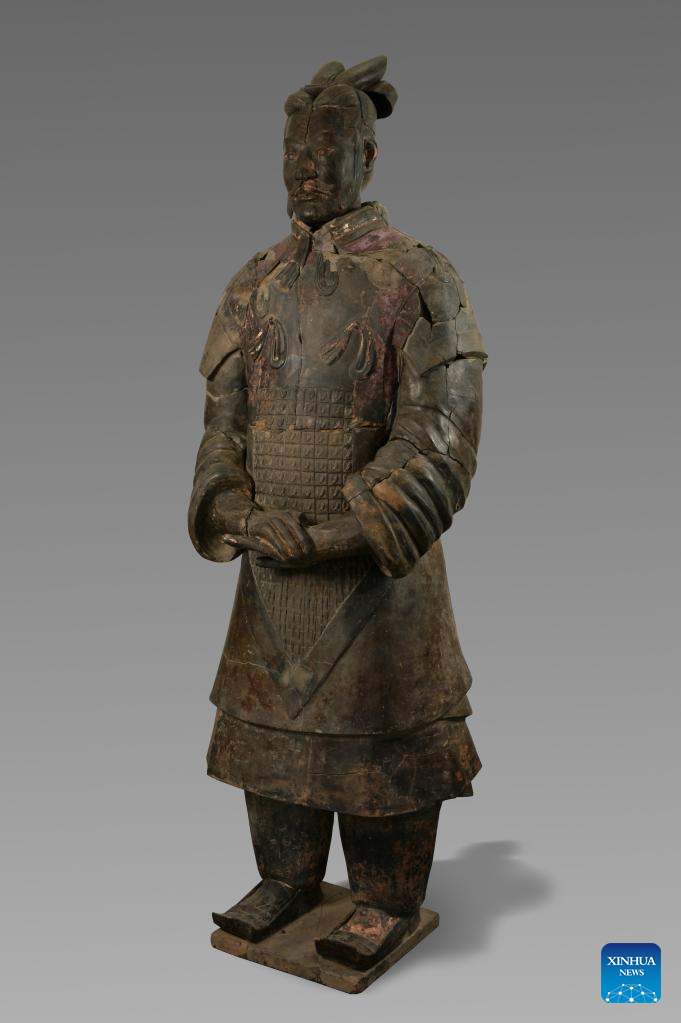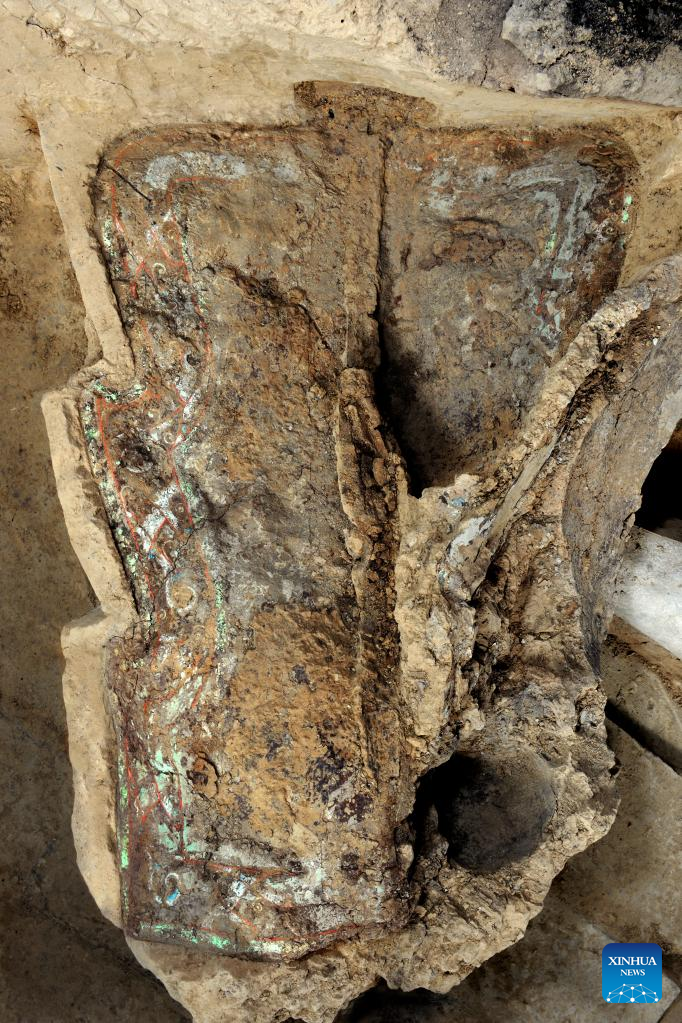
This undated file photo shows a terracotta warrior unearthed from a burial pit near Emperor Qinshihuang's Mausoleum in northwest China's Shaanxi Province. (Emperor Qinshihuang's Mausoleum Site Museum/Handout via Xinhua)
XI'AN, Jan. 12 (Xinhua) -- Over 220 terracotta warriors have been unearthed from a burial pit near Emperor Qinshihuang's Mausoleum in northwest China's Shaanxi Province, the provincial cultural relics bureau said Thursday.
The discovery was made during a major excavation that started in 2009, the third of its kind at Pit No.1, carried out in an area of about 430 square meters.
A total of 16 terracotta horses, 4 chariots, some weapons, and production tools were also unearthed.
According to Shen Maosheng, a researcher at the Emperor Qinshihuang's Mausoleum Site Museum, several breakthroughs have been made during the excavation. For example, the pattern of the formation of the army in the pit was preliminarily clarified.
Archaeologists have also made clear the production procedure of the terracotta warriors -- detailed carving was done to the figurines' bodies before arms were connected with them.
Pit No.1, the largest burial pit excavated so far near the mausoleum, covers an area of 14,260 square meters. Based on the density of the army arrangement, more than 6,000 terracotta warriors and horses could be unearthed in the pit after full excavation. ■

This undated file photo shows a shield unearthed from a burial pit near Emperor Qinshihuang's Mausoleum in northwest China's Shaanxi Province. (Emperor Qinshihuang's Mausoleum Site Museum/Handout via Xinhua)



